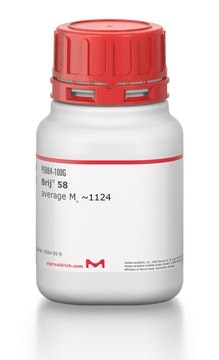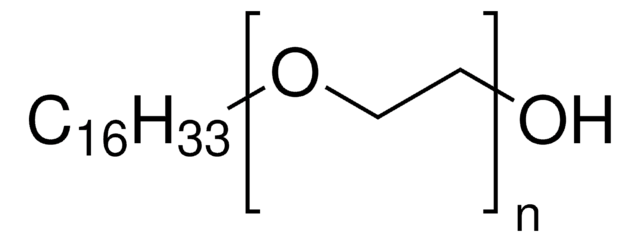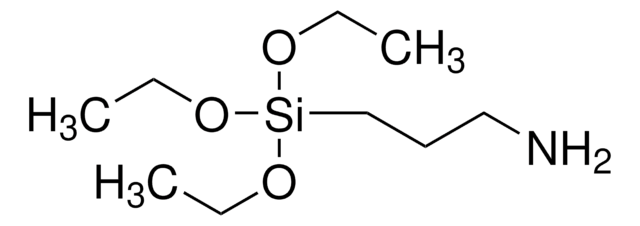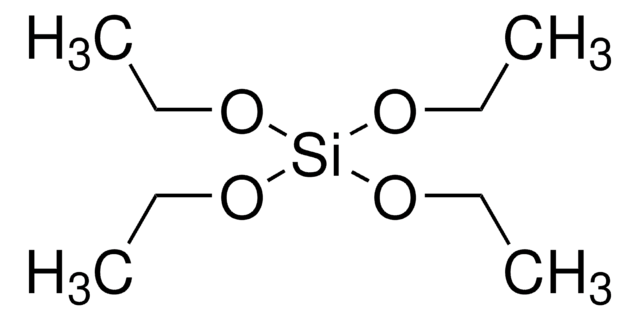466387
Brij® S 100
average Mn ~4,670
Synonym(s):
Polyoxyethylene (100) stearyl ether
About This Item
Recommended Products
mol wt
average Mn ~4,670
Quality Level
mp
51-54 °C (lit.)
hydroxyl value
13‑25 mg KOH/g
solubility
propylene glycol and xylene: insoluble
density
1.1 g/mL at 25 °C (lit.)
HLB
18
InChI
1S/C20H41O2/c1-2-3-4-5-6-7-8-9-10-11-12-13-14-15-16-17-19-22-20-18-21/h2-20H2,1H3
InChI key
PSEGVHKUPXNGGJ-UHFFFAOYSA-N
Looking for similar products? Visit Product Comparison Guide
Related Categories
Application
- as a non-ionic surfactant to study its interactions with luminol electrochemiluminescence for bioanalysis
- as a carrier material to study the formulation of nimodipine, fenofibrate, and o-vanillin using the particles from gas-saturated solution (PGSS) process
- as a hydrophilic surfactant in the casting solution to prepare an asymmetric flat sheet nanofiltration membranes and to study its effects on the hydrophilic property of the poly(ethersulfone) (PES) nanofiltration membranes
Legal Information
signalword
Warning
hcodes
Hazard Classifications
Acute Tox. 4 Oral
wgk_germany
WGK 2
flash_point_f
Not applicable
flash_point_c
Not applicable
ppe
Eyeshields, Gloves, type N95 (US)
Certificates of Analysis (COA)
Search for Certificates of Analysis (COA) by entering the products Lot/Batch Number. Lot and Batch Numbers can be found on a product’s label following the words ‘Lot’ or ‘Batch’.
Already Own This Product?
Find documentation for the products that you have recently purchased in the Document Library.
Customers Also Viewed
Our team of scientists has experience in all areas of research including Life Science, Material Science, Chemical Synthesis, Chromatography, Analytical and many others.
Contact Technical Service![Tris[3-(trimethoxysilyl)propyl] isocyanurate technical grade](/deepweb/assets/sigmaaldrich/product/structures/239/690/c24b2d6d-4580-41dd-a3ec-77f7fcb9caaf/640/c24b2d6d-4580-41dd-a3ec-77f7fcb9caaf.png)








